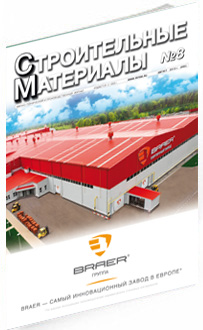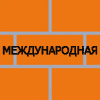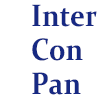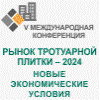Stroitel`nye Materialy №8

August, 2012
Table of contents
O.A. SERGIEVICH, Head of Sector “Ceramic Materials and Technologies of Special Purpose”, State Enterprise “Institute NIISM” (Minsk, the Republic of Belarus)
Features of Granulometric and Mineralogical Compositions of Kaolin of the Republic of Belaruc Deposits
Granulometric features of kaolins of “Sitnitsa” and “Dedovka” deposits in the Republic of Belarus in interconnection with chemical-mineralogical composition are presented; methods of enhancement of quality of kaolin raw material and prospects of its use in ceramic industry are recommended.
Keywords: kaolin, granulometric composition, enrichment, distribution of particles.
Granulometric features of kaolins of “Sitnitsa” and “Dedovka” deposits in the Republic of Belarus in interconnection with chemical-mineralogical composition are presented; methods of enhancement of quality of kaolin raw material and prospects of its use in ceramic industry are recommended.
Keywords: kaolin, granulometric composition, enrichment, distribution of particles.
V.A. GURIEVA, Candidate of Technical Sciences, the Orenburg State University; V.V. PROKOFIEVA, Doctor of Technical Sciences, the St. Petersburg State University of Architecture and Civil Engineering
The urgency of replacement of traditional raw materials by cheaper anthropogenic in manufacture of building ceramics is shown. Results of the study of influence of the content of a magnesia component, low-grade clays and forming humidity on properties of an intermediate product and a finished article are presented.
Keywords: anthropogenic raw materials, magnesium silicates, low-grade clays, building ceramic.
The urgency of replacement of traditional raw materials by cheaper anthropogenic in manufacture of building ceramics is shown. Results of the study of influence of the content of a magnesia component, low-grade clays and forming humidity on properties of an intermediate product and a finished article are presented.
Keywords: anthropogenic raw materials, magnesium silicates, low-grade clays, building ceramic.
I.F. SHLEGEL, Candidate of Technical Sciences, General Director; G.Ya. SHAEVICH, Director; A.V. RUKAVITSYN, Deputy Director; A.V. NOSKOV, Leading Specialist; D.A. SLEMNEV, engineer-technologist, the Institute of New Technologies and Automation of Building Materials Industry, OOO “INTA-Story” (Omsk)
Determination of Efficiency of Mixing in the Course of Plastic Preparation of Raw Materials
Methods of determination of mixing efficiency in the course of plastic preparation of raw materials have been developed and tested. The scheme and example of assessment of uniformity of distribution of components using the foaming polystyrene granules as a key component are presented. The coefficient of variation is accepted as a characteristic of distribution efficiency. It is shown that the inclusion of the “Kaskad” unit in the raw materials preparation line makes it possible to ensure the high degree of raw material homogenization ( coefficient of variation <5).
Keywords: plastic forming, efficiency of mixing, “Kaskad” unit.
Keywords: plastic forming, efficiency of mixing, “Kaskad” unit.
M.B. SEDELNIKOVA, N.V. LISEENKO, Candidates of Technical Sciences, V.M. POGREBENKOV, Doctor of Technical Sciences, the Tomsk National Research Polytechnic University
Pigments on the Basis of Belite for Coloration of Building Ceramics
On the basis of industrial waste, nepheline slime (belite), the pigments of a broad range of colours with structures of silicates –grothite, wollastonite, diopside, helenite, hardystonite, okermanit, anorthite – are synthesized. The use of cheap raw materials and relatively low temperature of the synthesis makes it possible to reduce expenditures for pigments production. The pigments obtained can be used for volumetric coloration of rough ceramics, in composition of engobes, finishing materials, dry building mixes.
Keywords: belite, chromophores, pigments, volumetric coloration
On the basis of industrial waste, nepheline slime (belite), the pigments of a broad range of colours with structures of silicates –grothite, wollastonite, diopside, helenite, hardystonite, okermanit, anorthite – are synthesized. The use of cheap raw materials and relatively low temperature of the synthesis makes it possible to reduce expenditures for pigments production. The pigments obtained can be used for volumetric coloration of rough ceramics, in composition of engobes, finishing materials, dry building mixes.
Keywords: belite, chromophores, pigments, volumetric coloration
S.M. USOV, engineer-electrophysicist (usov_sm@mail.ru), ZAO "NEVZ-CERAMICS"; V.G. GORSHKOV, engineer-mechanic (teplonasos@yandex.ru), OOO “OKB Teplosibmash” (Novosibirsk)
Energy Saving Processing Line for Brick Manufacturing – a Source of Heat Energy
Results of the calculation of values of power flows and thermal balance of a line producing 30 million piece of hollow brick a year are presented. The use of this energy efficient line makes it possible to reduce the energy consumption for brick manufacture by 2–2.5 times. Inclusion of a heat exchanger, a cyclone-foam heat-exchange apparatus, and a ecologically safe lithium bromide heat pump into the heat recovery equipment complex allows to carry out deep recycling (including warmth of condensation of water steams) and clearing of smoke gases, to transform the low-grade thermal energy for heat supply of brick-works and a corresponding infrastructure.
Results of the calculation of values of power flows and thermal balance of a line producing 30 million piece of hollow brick a year are presented. The use of this energy efficient line makes it possible to reduce the energy consumption for brick manufacture by 2–2.5 times. Inclusion of a heat exchanger, a cyclone-foam heat-exchange apparatus, and a ecologically safe lithium bromide heat pump into the heat recovery equipment complex allows to carry out deep recycling (including warmth of condensation of water steams) and clearing of smoke gases, to transform the low-grade thermal energy for heat supply of brick-works and a corresponding infrastructure.
A.M. SALAKHOV, Candidate of Technical Sciences, L.R. TAGIROV, Doctor of Physical-Mathematical Sciences, “Clinker ceramics KFU, Ltd”; V.P. MOROZOV, Doctor of Geological-Mineralogical Sciences, the Kazan Federal University; R.R. KABIROV, General Director, OAO “Alekseyevskaya keramika”; R.A. SALAKHOVA, Candidate of Technical Sciences, Volga-Kama branch, ZAO “VNIISTROM named after P.P. Budnikov”; G.R. FASEEVA, Master of Technics and Technology, the Kazan National Technological University (Kazan)
Ceramic with High Content of Calcium Silicates
It is proved, that ceramic wall materials with high content of calcium silicates can be produced at roasting temperature by 100 °С low than temperatures traditionally used in technology of building ceramics. The theory and experimental data are confirmed with know-how of OAO «Alekseevskaya keramika» where ceramic wall materials with high physical-technical characteristics are produced.
Keywords: ceramic materials, calcium silicates, crystalline new formations, durability, energy efficiency.
It is proved, that ceramic wall materials with high content of calcium silicates can be produced at roasting temperature by 100 °С low than temperatures traditionally used in technology of building ceramics. The theory and experimental data are confirmed with know-how of OAO «Alekseevskaya keramika» where ceramic wall materials with high physical-technical characteristics are produced.
Keywords: ceramic materials, calcium silicates, crystalline new formations, durability, energy efficiency.
A.N. LIVADA, General Director, Group of Companies “FON” (Republic of Tatarstan)
Innovation Technologies for Manufacture of Ceramic Products at “Klyuchishchinskaya Keramika” Brickworks
The analysis of technological decisions introduced at “Klyuchishchinskaya Keramika” Brickworks is carried out; the further ways of development of manufacture aimed at the improvement of quality of products manufactured and production of energy efficient materials are planned.
Keywords: building ceramic materials, innovation technology, quality.
Keywords: building ceramic materials, innovation technology, quality.
A.Yu. EREMIN, Deputy Minister of Natural Resources of the Sverdlovsk Region; O.N. ORLOVA, Director, GKU SO “Centre of Ecological Monitoring and Control” (Ekaterinburg)
On Formation and Conduct of Sverdlovsk Regional Cadastre of Waste of Production and Consumption
It is shown that the introduction of conducting the Regional Cadastres of waste of production and consumption is necessary. An example of the formation of such cadastre in the Sverdlovsk Region is presented. The cadastre introduction gives a trustworthy information on all questions of waste treatment in dynamics since 2004.
Keywords: cadastre, waste neutralization, placing of waste, technology of waste processing.
Keywords: cadastre, waste neutralization, placing of waste, technology of waste processing.
I.N. SHVETSOVA, engineer (i.n.shvetsova17@gmail.com), G.M. BATRAKOVA, Doctor of Technical Sciences, E.S. SHIRINKINA, Candidate of Technical Sciences, the Perm National Research Polytechnic University
Assessment of Ecological Danger of Building Materials after Operation in Aggressive Industrial Environment
On an example of one of the enterprises for manufacture of the aniline to be demolished, it is shown, that for returning of town-planning value of industrial territories it is important not only to offer organizational and technical decisions of dismantle and demolition, but also to solve questions of treatment of waste after liquidation of buildings and constructions. It is experimentally proved, that under operating conditions in corrosive environment the finishing materials collect toxic substances. The obtained data and revealed dependences of migration of a priority polluting substance deep into building materials have made it possible to prove the necessary degree and way of neutralization of building structures.
Keywords: ecological safety, aggressive environment, aniline manufacture, building waste, chemical pollutions.
Keywords: ecological safety, aggressive environment, aniline manufacture, building waste, chemical pollutions.
G.V. ILINYKH, engineer(galinka14@yandex.ru), the Perm National Research Polytechnic University
Potential Assessment of Solid Household Waste (SHW) in Case of Use of Products of Their Processing in the Construction Industry
Results of the natural study of morphological structure of waste in several cities are presented. On the basis of the received results the estimation of potential of solid household waste for the building industry as one of the most priority now directions of the use of products of SHW processing for Russia is made.
Keywords: solid household waste, potential of waste use, building materials from secondary raw materials.
Keywords: solid household waste, potential of waste use, building materials from secondary raw materials.
V.I. KALASHNIKOV, V.S. DEMIYANOVA, Doctor of Technical Sciences, V.M. VOLODIN, A.D. GUSEV, engineers, the Penza State University of Architecture and Civil Engineering
Resource Saving Powder Fibrous Concretes with Use of Anthropogenic Waste
The resource saving powder fibrous concretes with use of anthropogenic waste have been developed. Metal cord, a product of processing of worn automobile tyres, is proposed to use as reinforcing elements.
Keywords: fibrous concrete, anthropogenic waste, reinforcement.
Keywords: fibrous concrete, anthropogenic waste, reinforcement.
K.G. PUGIN, Candidate of Technical Sciences (123zzz@rambler.ru), the Perm National Research Polytechnic University
Issues of Ecology of Use of Ferrous Metallurgy Solid Waste in Building Materials
Ecological risks in case of use of solid waste of ferrous metallurgy in the composition of building materials are considered. Experimental data on migration of heavy metals in model environments from building materials of different structure are given. An analytical comparison of ecological risk value at different technologies of involving of metallurgical waste in the construction is presented.
Keywords: building materials, metallurgical waste, ecology, heavy metals.
Keywords: building materials, metallurgical waste, ecology, heavy metals.
F.L. KAPUSTIN, Doctor of Technical Sciences, I.V. RYZHKOVA, engineer, the Ural Federal University named after the First President of Russia B.N. Yeltsin (Ekaterinburg) Unfired Ash Gravel is an Effective Filler for Structural Concretes Results of the study of influence of additives on durability of ash-cement stone are presented. The possibility of the use of unfired ash gravel in structural concrete is shown.
Keywords: unfired ash gravel, fly ash, granulation, durability, filler, structural concrete.
B.V. GUSEV, Doctor of Technical Sciences, Corresponding Member of RAS; IN IEN-LYAN, Doctor of Technical Sciences, the Taiwan State University; Yu.R. KRIVOBORODOV, Doctor of Technical Sciences, the D. Mendeleyev University of Chemical Technology of Russia
Increase in Activity of Ash-Containing Cements and Concretes on their Basis
One of the perspective ways of development of binding materials manufacture is a production of low-clinker cements that is reached by inclusion of various mineral additives in the course of cement grinding. Results of the study of durability of cement stone made of Portland cement with addition of ash-slag waste are presented. Since the inclusion of additives in cement structure leads to decrease in cement stone durability the method of cement activation with the help of the device for dispergation (RPA) is used. Activation of ash-slag waste and cement containing this waste makes it possible to significantly increase the durability of cement stone and to improve its microstructure.
Keywords: cement, ash, hydration, hardening, durability, microstructure of cement stone.
Keywords: cement, ash, hydration, hardening, durability, microstructure of cement stone.
E.V. KORNEEVA, Candidate of Technical Sciences, the Siberian State Industrial University (Novokuznetsk, Kemerovo Reg.)
Study of Steelmaking Slag for the Purpose of Secondary Use
The work is devoted to physical-chemical studies of anthropogenic waste of metallurgical production. Results of the experimental studies are presented. The process of slag activation is considered. The results obtained are analyzed.
Keywords: steelmaking slag, activation, physical-chemical studies.
Keywords: steelmaking slag, activation, physical-chemical studies.
V.V. YADYKINA, Doctor of Technical Sciences, A.M. GRIDCHIN, Doctor of Technical Sciences, S.S. TOBOLENKO, engineer(tobolenko-ss@yandex.ru), the Belgorod State Shukhov Technological University (BGTU named after V.G. Shukhov)
A Stabilizing Additive for Crushed Stone-Mastic Asphalt Concrete from Industrial Waste
The possibility of use of waste as an granulated additive for crushed stone-mastic asphalt concrete is investigated. Results of the study of the granulated additive of own manufacture are described. It is noted, that characteristics of asphalt concrete with the given additive do not concede to characteristics of asphalt concrete with an import additive.
Keywords: crushed stone-mastic asphalt concrete, stabilizing additives, bitumen film, structurizing layer, physical-mechanical characteristics.
Keywords: crushed stone-mastic asphalt concrete, stabilizing additives, bitumen film, structurizing layer, physical-mechanical characteristics.
I.V. NEDOSEKO, V.V. BABKOV, Doctors of Technical Sciences, S.S. YUNUSOVA, Candidate of Technical Sciences, A.R. GAITOVA, I.I. AKHMADULINA, engineers, the Ufa State Petroleum Technical University
Gypsum and Gypsum-Slag Compositions on the Basis of Natural Raw Materials and Industrial Waste
Domestic experience in manufacture and application of gypsum wall materials is generalized. Structures of gypsum compositions and the product range received on their basis for construction of low-rise buildings are presented. The possibility of manufacture of wall and partition products on the gypsum-slag basis using the semidry pressing is shown.
B.S. BATALIN, V.V. KARMANOV, Doctors of Technical Sciences, the Perm National Research University
Fire Hazard of Self-Extinguishing Polystyrene Foam
Reasons for high fire hazard of self-extinguishing polystyrene foam are discussed. Results of the thermogravimetric analysis combined with the mass spectrometric determination of pyrolysis products are presented. It is proved, that the content of halogen-organic fire-retardants in self-extinguishing expanded polystyrene under conditions of oxidizing pyrolysis can lead to high-toxic products.
S.A. GOLUNOV, engineer, the Moscow State University of Civil Engineering; S.P. SIVKOV, Candidate of Technical Sciences, D. Mendeleyev University of Chemical Technology of Russia (Moscow)
Reasons for Decrease of Adhesion of Basic Plaster Compositions to Mineral Wool Slabs in Façade Heat Insulation Composition Systems
Results of the study of the processes arising on the border of a mineral base plaster layer and the surface of plates of heaters from a stone and glass fibre in systems of façade heat insulation composites (SFHIC) with thin plaster layers are described. Infringements of the integrity of system, causing decrease in durability of coupling of layers, owing to occurrence of internal pressure because of cyclic change of volume of covers of high-disperse hydrosilicates of calcium formed on a surface of mineral fibres at their corrosion in contact with cement mortars with the raised content of alkaline oxides К2О and Na2O are shown. The article also gives recommendations on improvement of adhesion values between layers of the SFHIC system.
Keywords: façade heat insulation composite system(?), adhesion of plaster layer, corrosion of mineral fibre, secondary ettringite.
Keywords: façade heat insulation composite system(?), adhesion of plaster layer, corrosion of mineral fibre, secondary ettringite.
S.K. BEZRUCHKO, General Director, OOO "VAKER KHEMI RUS" (Moscow), Yu. BEZLER, Director, Technical Centre EMEA, WACKER Co.(Germany)
Energy Saving and Cost Reduction in Construction by Means of Innovation Chemistry
The properly chosen system of heat insulation can lower power inputs for the house maintenance by 60 %. Data on the use of SSTI in Germany are presented. Layers SSTI and materials used in them are described, and also appointment of each layer is shown. Dispersive polymeric powders can be used for creation of innovation heat insulation systems adapted to consumer’s requests and ensuring the comfort conditions in premises at simultaneous maintenance of ecological compatibility. The role of dispersive polymeric powders VINNAPAS® in structure of SSTI and other dry building mixes is shown.
A.P. PICHUGIN, Doctor of Technical Sciences, M.O. BATIN, V.V. BANUL, engineers, the Novosibirsk State Agrarian University
Floors from Materials Modified with Polymeric Compositions in Rural Construction
Results of the examination of floors of stock buildings are presented. It is shown, that floors and other elements of agricultural buildings and constructions have low durability under conditions of influence of aggressive environment of cattle-breeding premises. The technology of construction of grid floors with manufacturing of lattices of 100.5 m from wood preliminary modified with polymeric compositions for various sex-age groups of large horned livestock is described.
Keywords: floors of stockbreeding complexes, modified wood, polymers, nanoadditive-modifiers.
Keywords: floors of stockbreeding complexes, modified wood, polymers, nanoadditive-modifiers.
Yu.F. PANCHENKO, engineer(indyboot@list.ru), G.A. ZIMAKOVA, Candidate of Technical Sciences, O.A. STEPANOV, Doctor of Technical Sciences, D.A. PANCHENKO, engineer, the Tyumen State University of Architecture and Civil Engineering
Heat Insulation Covering on the Basis of Liquid Foil and Hollow Microspheres Improvement of heat protective characteristics of enclosing structures owing to the use of a material in the form of thin coating which along with heat reflecting functions have low heat conductivity is considered. The most efficiently it can be realized by means of a heat insulating covering consisting of liquid foil, hollow microspheres, and plasticizers.
Keywords: heat insulation, heat reflection, microsphere, aluminium pigment.
Heat Insulation Covering on the Basis of Liquid Foil and Hollow Microspheres Improvement of heat protective characteristics of enclosing structures owing to the use of a material in the form of thin coating which along with heat reflecting functions have low heat conductivity is considered. The most efficiently it can be realized by means of a heat insulating covering consisting of liquid foil, hollow microspheres, and plasticizers.
Keywords: heat insulation, heat reflection, microsphere, aluminium pigment.
 |
 |
 |
 |
 |
 |
 |
